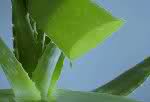Aloe vera (Aloe barbadensis) is one house plant that is hard to miss. It comes from the family of lily; it is spiky, succulent, and perennial. It is native to the eastern and southern part of Africa but it has spread throughout many of the warmer regions of the world like the Philippines. Physically, it is a short-stemmed plant that could grow from 80 to 100 cm tall, spreading by offsets and root sprouts. The leaves are lanceolate, thick and fleshy with thorny edges and with color ranging from deep green to greygreen.

It is ubiquitous in almost every house garden and is either used as accents for landscaping or for its medicinal value. Since it is easy to grow and maintain, it is widely used as natural groundcover or container plant in rock gardens.
For its medicinal value, the juice of its thick, spiny-edged, and fleshy leaves are well reputed for its natural healing effect. The aloe plant’s healing powers are most widely touted for being able to treat skin conditions. It has anti-inflammatory properties, which may explain why it has been known to lessen the pain and swelling associated with itches and burns. Many of the medicinal uses of aloe vera are common knowledge. What is less known, however, is its uses in poultry.
Aloe as growth enhancer in chickens
Broiler production alone already comprises 85% of the poultry meat requirement of the Filipinos. Although the demand is high, the industry could hardly make up with the requirement due to high prices of commercially and imported feeds. Thus, the poultry industry particularly on the part of the raisers, continuously find means to lessen their cost of production. One way is to look for alternative source of feed supplement that is not only cheap and can boost the growth of chickens but most important, is organic and readily available.
In the recent study of Mr. Feliciano R. Bejar of the Samar State College of Agriculture and Forestry and Ms. Remedios P. Colapo of the University of Eastern Philippines, Northern Samar, this dilemma in the broiler industry was particularly addressed using extracts from aloe vera. Unknown to many, this plant is not only valued for its medicinal components but it also plays an important role in promoting growth in chickens.
Mr. Bejar conducted a 42-day experiment to study the growth performance of 90 broilers whose drinking water was mixed with aloe extract. The chickens subjected to this study were randomly distributed into five aloe extracts treatments: 5 ml, 10 ml, 15 ml, 20 ml per gallon of drinking water, and plain water as control. The method followed a complete ramdomized design (CRD), which was replicated three times.
In order to determine if the aloe extract indeed created an effect on the growth of the chickens, the researchers used five parameters to measure growth performance of broilers: 1) body weight; 2) feed consumption; 3) feed conversion ration; 4) water consumption; and 5) return of investment. They also determined sensory evaluation of the broilers given the drinking water supplemented with the aloe vera extract. A sensory evaluation was conducted to evaluate the meat for its color, desirability, intensity, texture, tenderness, juiciness, and general acceptability.
Aloe vera leaves were first subjected to toxicity test at the Philippine Rootcrops Laboratory, Leyte before juice was extracted. Results showed no effect to the chicken fed. Researchers found that all animals subjected to this particular study became more active after receiving the aloe extracts.
Result of the 42-day experiment showed that the final weight and gain in weight of the broilers were significantly affected by the aloe vera extract supplementation. Broilers given with the aloe extracts as drink supplement (5-20 ml) significantly improved their growth rates compared to those broilers given plain water, which showed the lowest final weight and gain in weight.
In terms of feed consumption, broilers given the 15 ml and 20 ml of aloe extracts in their drinks rated the highest (ave. of 3387.78 g and 3148.89 g, respectively) while those given the plain water rated the least (2737.22 g). This result, according to the researchers implied that the final weight and gain in weight were strongly influenced by the feed intake
of the chicken.
Meanwhile, no significant results were found in the feed conversation ratio (FCR) of broilers although numerically, those chicken given the aloe extracts showed slightly better FCR than those given plain water. Likewise, aloe vera supplementation did not significantly affect the carcass and sensory characteristics of the broiler meat, retaining the acceptability and saleability of the product.
For the dressing percentage (weight of the carcass and organs after the treatment was applied), again, those given the aloe extract supplementation command the highest dressing percentage while the unsupplemented ranked the least. This means that the heavier the final weight, the better is the dressing percentage in chickens.
For the economic competency, analysis showed that chicken whose drink was supplemented with aloe extracts showed the best return of investment (ROI) among the treatments with 30% ROI compared to the 7.5% of the unsupplemented.




i would like to know who is the author of this webpage